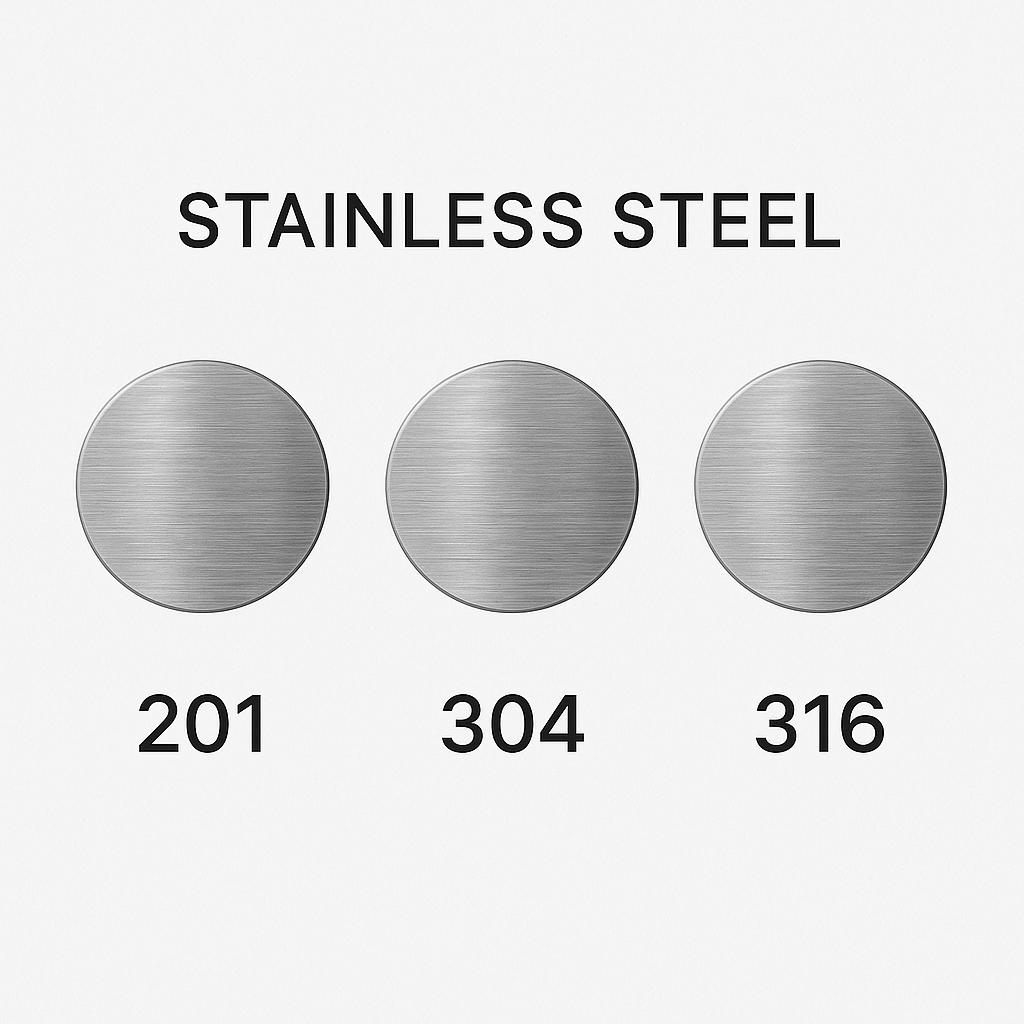❓ FAQ – Stainless Steel Grades Q&A|201, 202, 304, 316, 430, 317 Comparison & Applications
🔧 Stainless Steel Grades Q&A: 201・202・304・316・430・317
Here we compare the most common stainless steel grades, focusing on corrosion resistance, cost, workability, color, and applications.
Q1|Why doesn’t stainless steel rust easily?
It contains chromium (Cr), which forms a protective oxide layer. Nickel, molybdenum, manganese, and nitrogen improve corrosion resistance and strength.
Q2|What are the features of 201?
Low cost, manganese replaces part of nickel. Color is dark silver-gray. Suitable for indoor fittings, but prone to rust in humid or salty environments.
Q3|How is 202 different from 201?
202 has slightly higher nickel and more manganese/nitrogen, offering better corrosion resistance than 201. Color is brighter silver-gray. Still weaker than 304, best for dry indoor use.
Q4|Why is 304 the most widely used?
Balanced properties with good corrosion resistance and weldability. Color is bright white silver. Used in kitchenware, buildings, and industrial parts.
Q5|What makes 316 different from 304?
316 contains molybdenum, offering stronger resistance to chloride and pitting. Similar color to 304, but better for marine or chemical environments.
Q6|What about 430?
Ferritic stainless steel, magnetic, lowest cost. Color is deep silver-gray. Used in household appliances and decoration, but with weak corrosion resistance.
Q7|When to use 317/317L?
Higher molybdenum content than 316, providing even stronger corrosion resistance. Color similar to 316, ideal for chemical and marine industries.
📊 Stainless Steel Grades Comparison Table
| Grade | Corrosion Resistance | Workability | Magnetism | Cost | Color | Applications |
|---|---|---|---|---|---|---|
| 201 | Low (dry indoor only) | Good | Slightly magnetic | Low | Dark silver-gray | Indoor fittings |
| 202 | Moderate (better than 201) | Good | Slightly magnetic | Low | Bright silver-gray | Indoor parts, general use |
| 304 | High (general purpose) | Excellent | Non-magnetic | Medium | Bright white silver | Kitchenware, construction |
| 316 | Very high (marine, chloride) | Excellent | Non-magnetic | Medium-high | Bright white silver | Marine, chemical, medical |
| 317/317L | Extremely high (heavy corrosion) | Good | Non-magnetic | High | Bright white silver | Chemical & marine |
| 430 | Low (non-harsh use) | Moderate | Magnetic | Low | Deep silver-gray | Appliances, decoration |




